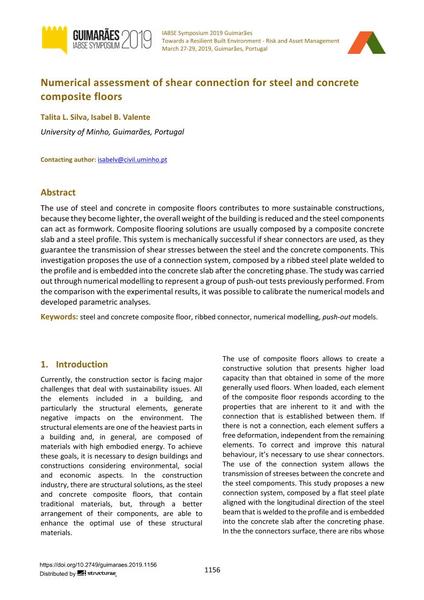Numerical assessment of shear connection for steel and concrete composite floors

|
|
|||||||||||
Détails bibliographiques
| Auteur(s): |
Talita L. Silva
(University of Minho, Guimarães, Portugal)
Isabel B. Valente (University of Minho, Guimarães, Portugal) |
||||
|---|---|---|---|---|---|
| Médium: | papier de conférence | ||||
| Langue(s): | anglais | ||||
| Conférence: | IABSE Symposium: Towards a Resilient Built Environment Risk and Asset Management, Guimarães, Portugal, 27-29 March 2019 | ||||
| Publié dans: | IABSE Symposium Guimarães 2019 | ||||
|
|||||
| Page(s): | 1156-1163 | ||||
| Nombre total de pages (du PDF): | 8 | ||||
| DOI: | 10.2749/guimaraes.2019.1156 | ||||
| Abstrait: |
The use of steel and concrete in composite floors contributes to more sustainable constructions, because they become lighter, the overall weight of the building is reduced and the steel components can act as formwork. Composite flooring solutions are usually composed by a composite concrete slab and a steel profile. This system is mechanically successful if shear connectors are used, as they guarantee the transmission of shear stresses between the steel and the concrete components. This investigation proposes the use of a connection system, composed by a ribbed steel plate welded to the profile and is embedded into the concrete slab after the concreting phase. The study was carried out through numerical modelling to represent a group of push-out tests previously performed. From the comparison with the experimental results, it was possible to calibrate the numerical models and developed parametric analyses. |
||||
